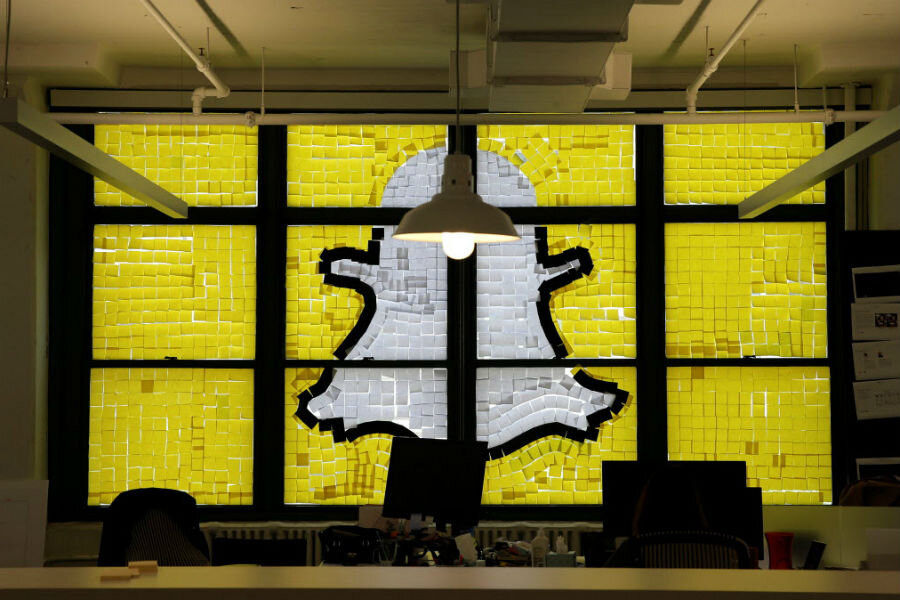Is Snapchat becoming overrun with 'old' people?
Loading...
Watch out, teens: the 35-and-older crowd is coming for Snapchat.
A recent comScore report revealed that 38 percent of smartphone users in the United States aged 25 to 34 are now on Snapchat, as well as 14 percent of those 35 or older. To compare, those numbers were 5 percent and 2 percent three years ago.
Experts say it's typical for social media apps popular with young people to eventually catch on with their parents. In this case, the 35-and-over set is attracted to the same privacy features that appealed to the younger crowd. And while it may not necessarily be good news for teens using the app, it's certainly good news for Snapchat itself.
"If they want to compete at the highest levels with Facebook, WhatsApp and Instagram, they can't just appeal to a younger crowd," said Brian Blau, a consumer technology analyst at research firm Gartner, to the Los Angeles Times. "That younger crowd carries a lot of purchasing power – it's a great demographic. But that limits Snapchat, if that's all they ever are."
Appealing to an older crowd is also a smart business move for the app as it woos advertisers, experts say, since older people are more likely to have money to spend.
Speaking at Advertising Week Europe in April, the company's vice president of content, Nick Bell, said that one of the two biggest misconceptions people have about Snapchat is that it caters only to young people, adding that the demographics of the app are broadening and that two-thirds of the Snapchat audience is over 18.
While the app has been dubbed "confusing" by many adults – even the 32-year-old senior tech writer at Slate described it as "impenetrable" – a few brave souls have begun to explore what Snapchat has to offer.
One 43-year-old mom who uses the app said that she likes the fact that there's less pressure to look good in pictures, since they will disappear after 24 hours at most, and she finds that the app allows for a more personal connection when communicating with family and friends.
This ability to offer more intimate communication may be one of Snapchat's greatest strengths in appealing to adults, experts say.
"Boomers and Generation X grew up in a time where having private conversations was the norm. When they wanted to catch up with a group of friends, they went directly to them, one-on-one, and connected," writes Sujan Patel for Forbes.
These conversations were had without fear of repercussions, he says, unlike interactions between young people today on social media sites like Facebook or Twitter.
"Snapchat is like real life," Mr. Patel continues. "A conversation had, and shared, disappears shortly after it’s over. It’s only between those involved, and then you’re left with the memory."
In a Guiding Tech article titled "6 Reasons to Use Snapchat Even Though You're Not a Teen," the author cites privacy of data and easy-to-use video calling, both features that highlight Snapchat's capacity for direct, private communication.
Many adult users say they also like Snapchat's relatively new "Discover" feature, which lets users swipe through content from various media organizations, ranging from Cosmopolitan to National Geographic.
With the benefits of attracting the 35-plus crowd come risks, however. Other social media sites previously popular with young people began to lose some of their teen appeal once an older demographic began to join. Facebook, which began as a network exclusively for college students, was named as the most important app by 50 percent of US teenagers three years ago, but that number has since fallen to 17 percent. (Despite Facebook co-founder Mark Zuckerberg's remark in 2013 that "coolness is done for us," Facebook remains the most popular social networking site, with nearly 1.6 billion users and 72 percent of American adults possessing an account.)
But Snapchat might be less susceptible to losing popularity among teenagers, as communication between users is more closed off, Amanda Lenhart, a researcher at the Data and Society Research Institute in New York, told The Wall Street Journal. For now, Snapchat executives don't seem too worried.
"We don’t have the public likes and comments that often make for awkward moments on traditional social media," a spokeswoman for Snapchat told The Wall Street Journal. "It’s never been an issue."
In other words, as Snapchat chief executive officer Evan Spiegel put it while speaking at a conference in January, "We’ve made it very hard for parents to embarrass their children."






